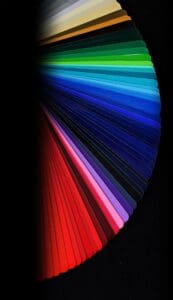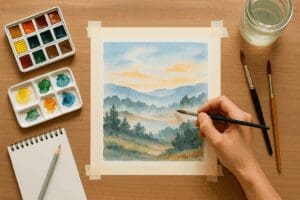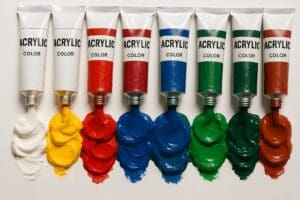Textural Painting: Techniques to Add Dimension to Your Artwork
Texture in painting adds depth, dynamism, and a tactile quality that can transform a flat canvas into an engaging visual experience. Artists have long used various methods to incorporate texture into their work, creating rich surfaces that invite viewers to not only see but almost feel the artwork. Whether you are working with oil, acrylic, or mixed media, understanding how to effectively use texture will elevate your art to new heights.
Understanding Texture in Art
Texture refers to the surface quality of an artwork—how it looks or feels. It can be real (tangible) or implied (visual illusion). Real texture is created by physically altering the surface, whereas implied texture is achieved through the use of techniques like dry brushing, layering, and strategic shading.
Why Use Texture in Painting?
Adding texture to a painting can:
- Create depth and dimension
- Enhance the visual appeal
- Evoke emotion and atmosphere
- Make artwork more interactive and engaging
From thick, expressive brushstrokes to the incorporation of unconventional materials, artists have a vast array of tools at their disposal to bring texture into their work.
Techniques to Add Texture to Your Paintings
1. Impasto Painting
Impasto is a technique where paint is applied thickly to the canvas, often with a brush or palette knife, to create a raised, textured effect. This method is particularly popular with oil and acrylic painters.
How to Achieve Impasto Texture:
- Use thick paint or a texture medium to build up layers.
- Apply paint with a palette knife for bold, expressive strokes.
- Let layers dry in between applications to enhance depth.
Famous artists like Vincent van Gogh and Claude Monet frequently used impasto to add energy and movement to their paintings.
2. Palette Knife Painting
A palette knife can be used to create a variety of textures, from smooth, blended gradients to sharp, jagged edges.
Tips for Palette Knife Painting:
- Load the knife with paint and spread it across the canvas like butter on bread.
- Experiment with different angles and pressures to achieve varying effects.
- Mix colors directly on the canvas for a spontaneous, textured look.
3. Using Gesso for Texture
Gesso is a primer used to prepare a painting surface, but it can also be manipulated to create interesting textures.
Ways to Use Gesso Creatively:
- Apply it thickly with a brush or sponge for a rough texture.
- Use a palette knife to create ridges and peaks.
- Stencil patterns onto the canvas for structured texture.
4. Incorporating Mixed Media
Mixed media techniques allow artists to go beyond traditional paint and incorporate materials like sand, fabric, and paper into their work.
Popular Mixed Media Textures:
- Sand & Grit: Mix sand or pumice gel with paint to create a coarse surface.
- Collage Elements: Layer pieces of paper, fabric, or string for an added dimensional effect.
- Gel Mediums: These can be used to create anything from a smooth glaze to a heavy, sculptural surface.
5. Dry Brushing for a Subtle Texture
Dry brushing involves using very little paint on a dry brush to create a scratchy, uneven effect.
Best Practices for Dry Brushing:
- Use a stiff-bristled brush.
- Lightly drag the brush across the canvas.
- Layer multiple colors for a more dynamic look.
6. Sgraffito (Scratching into Paint Layers)
Sgraffito is a technique where artists scratch through wet paint to reveal the layers beneath.
How to Create Sgraffito:
- Apply a thick layer of paint to your surface.
- Use a palette knife, comb, or even the handle of a brush to carve into the wet paint.
- Experiment with different tools for varied textures.
7. Stamping & Stenciling for Repetitive Texture
Using stamps, stencils, or other objects can create intricate and repetitive textures in your artwork.
Ideas for Stamping & Stenciling:
- Use bubble wrap for a unique, organic pattern.
- Press lace or fabric into wet paint for delicate textures.
- Experiment with handmade stamps from sponges or carved erasers.
8. Combining Multiple Techniques
For a truly unique and engaging painting, try combining several of these techniques. Layering impasto with mixed media elements, using dry brushing over a textured gesso base, or incorporating sgraffito into a palette knife painting can lead to unexpected and visually stunning results.
Practical Tips for Adding Texture to Your Artwork
- Plan Your Texture: Think about the effect you want to achieve before starting.
- Use the Right Tools: Experiment with different brushes, knives, and materials.
- Layer Strategically: Build up textures gradually to maintain control.
- Mix Mediums: Don’t be afraid to explore unconventional materials.
- Consider the Light: Textured surfaces cast shadows, adding to the dimensionality of your piece.
Resources & Further Reading
For artists looking to expand their knowledge of textural painting techniques, here are some useful external resources:
Conclusion
Texture is a powerful tool that can bring depth, intrigue, and emotion to your artwork. Whether through impasto, mixed media, or subtle dry brushing, incorporating texture into your paintings allows for a richer and more engaging artistic expression. Experiment with different materials and techniques to find what resonates with your unique style.
*For collaborations, art features, or inquiries, please contact us at in**@**********rt.ie. Don’t forget to follow us on Instagram, Facebook, Twitter.
Disclaimer: The views and opinions expressed in this article do not necessarily reflect the official policy or position of Irish Artmart.
Irish Artmart – Your Gateway to Artistic Excellence.
Tips to Express Your Creative Vision – Irish Artmart Podcast
Image by <a href=”https://pixabay.com/users/darkmoon_art-1664300/?utm_source=link-attribution&utm_medium=referral&utm_campaign=image&utm_content=8775367″>Dorothe</a> from <a href=”https://pixabay.com//?utm_source=link-attribution&utm_medium=referral&utm_campaign=image&utm_content=8775367″>Pixabay</a>




